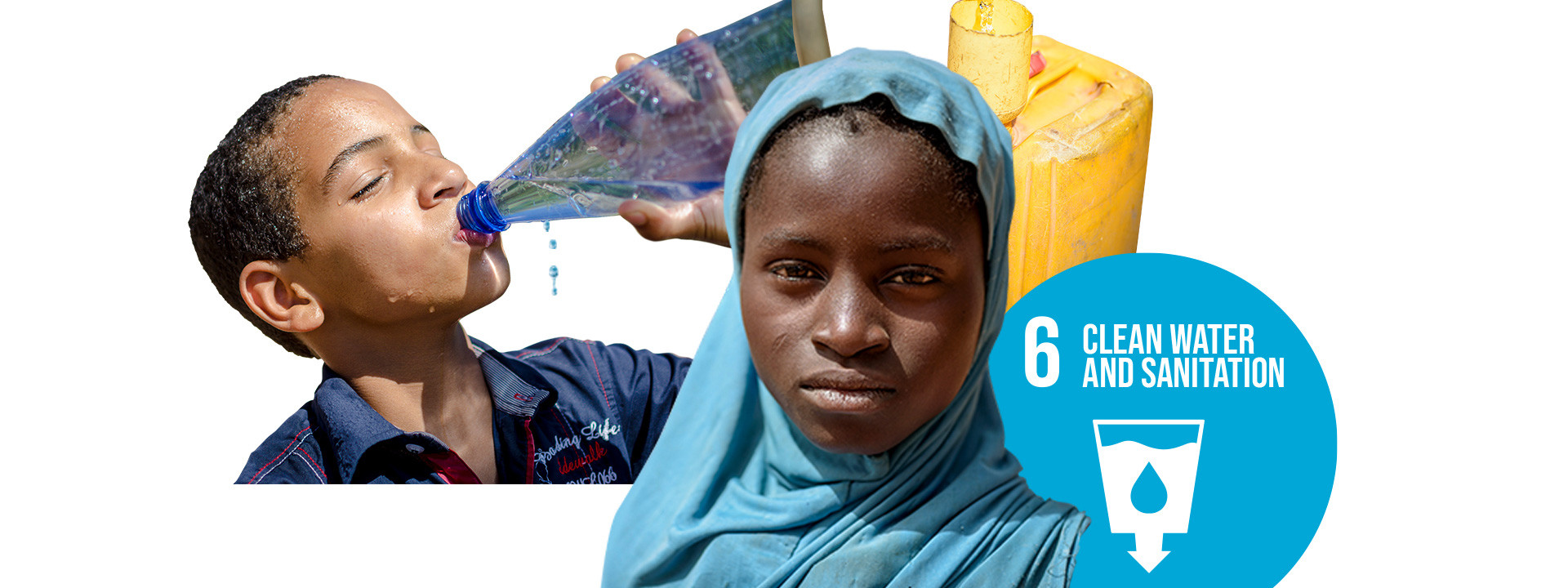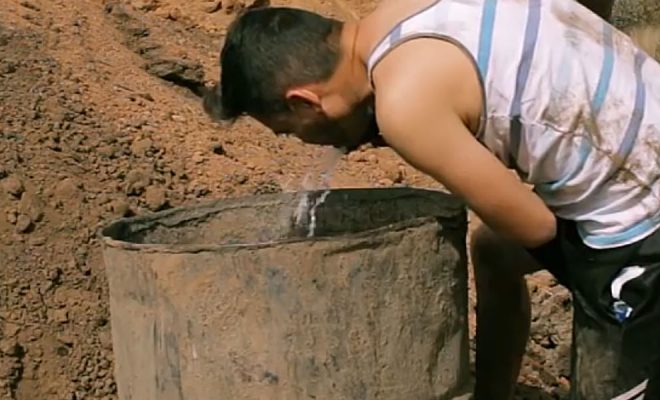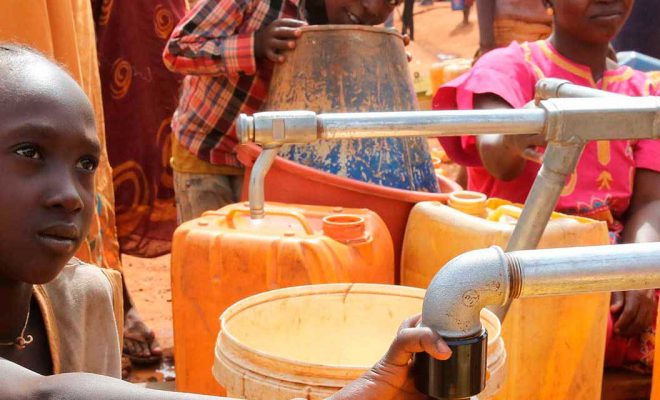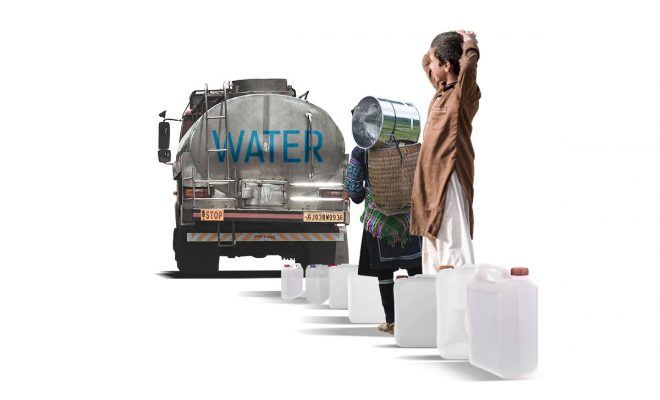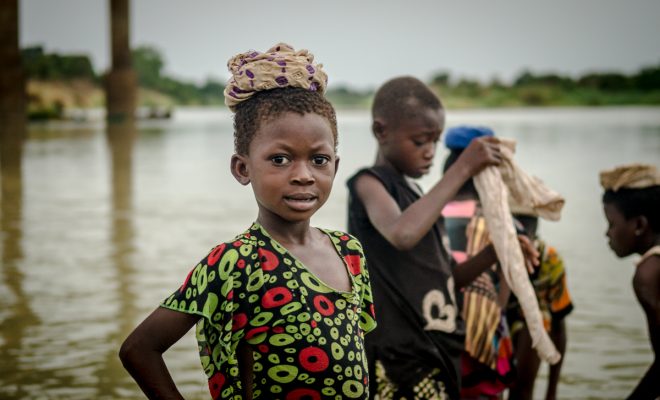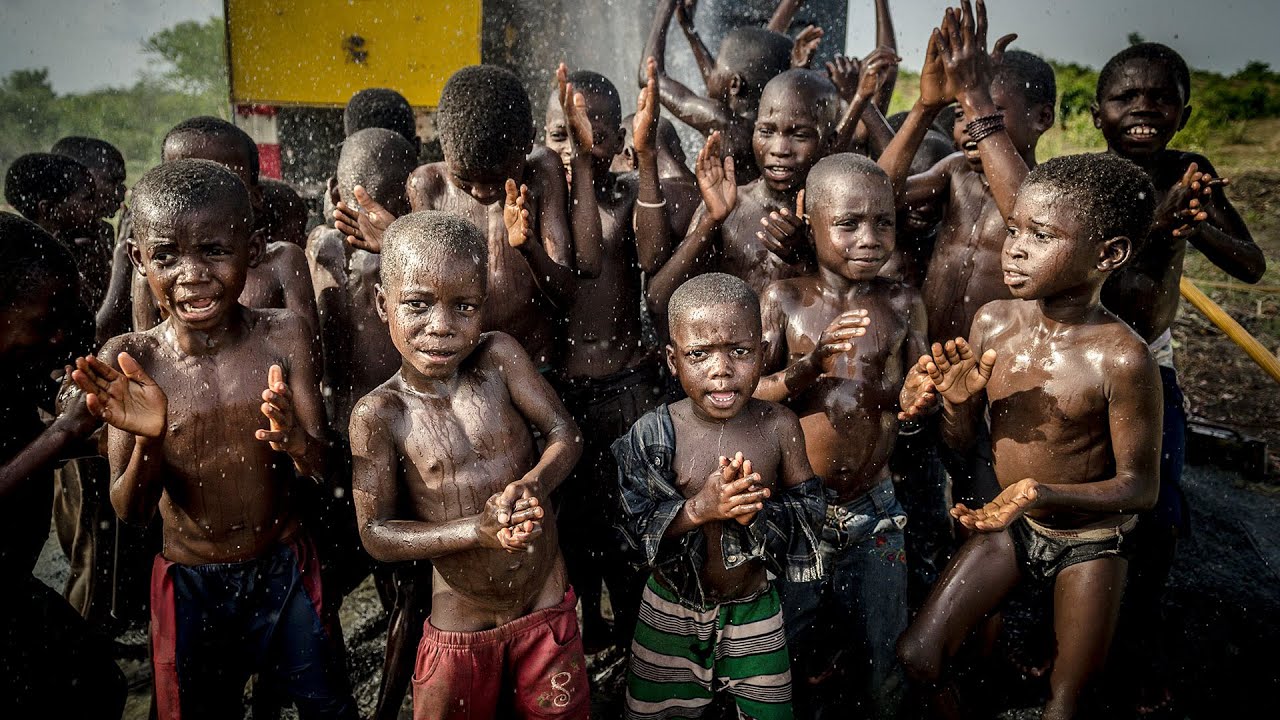
When the United Nations General Assembly established the 17 Sustainable Development Goals (SDGs) in 2015 to replace the Millennium Development Goals (MDGs), one of the most significant novelties was the inclusion of a specific goal for water and sanitation, the SDG 6. In addition, eight specific targets were also defined related to:
6.1 The access to drinking water.
6.2 The access to sanitation and hygiene.
6.3 Water quality and the management of wastewater.
6.4 The efficient use of water resources.
6.5 Integrated management of water resources.
6.6 Protection of water-related ecosystems.
6.A Building of management capacities.
6.B Participation of local communities in management.
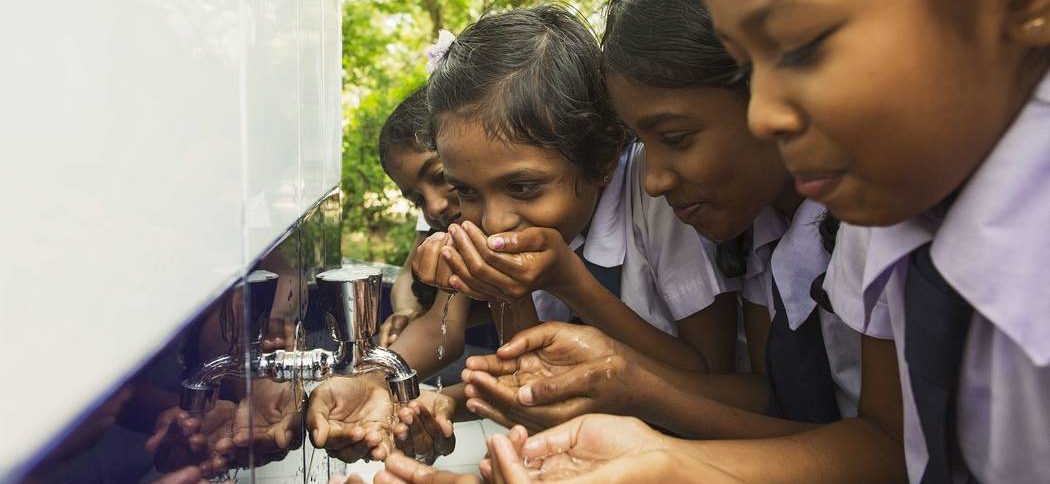
The first two targets refer to people’s direct relationship with drinking water and their health. © Nestle
Monitoring data
The first two targets refer to people’s direct relationship with drinking water and their health. In contrast, the remaining targets focus on adequate water management for food security and the protection of the environment. The UN appointed the WHO and UNICEF as the custodians of the first three targets through the Joint Monitoring Programme (JMP) for Water Supply, Sanitation, and Hygiene.
In 2018, the JMP published global data on access to water and sanitation, adding hygiene data in 2019, just before the Covid-19 pandemic. Since then, this database is the basic reference on the evolution of the key targets of SDG 6, establishing the essential unification of the technical jargon used. Most people had found it confusing and were not aware of the severe shortcomings of the human right to water and sanitation recognized by the United Nations General Assembly in 2010.
Let us take a look at the basic terms of the first two targets and the new indicators for their monitoring established by the JMP:

Improved sources can be piped water, protected wells and springs, and properly collected rainwater. © Callum Bacoe_unsplash
The vocabulary for target 6.1
The first target reads: “To achieve universal and equitable access to safe and affordable drinking water for all.” It is essential to understand the meaning of each of these terms:
“Access” refers to the existence of sufficient water to meet domestic needs available close to households.
“Universal” means that it extends to all scenarios and environments, including homes, schools, health centers, and workplaces.
“Equitable” means that there should be no inequalities between different population groups.
“Drinking water” is suitable for drinking, cooking, and personal hygiene. It must be free of pathogens and toxic chemicals harmful to health.
“Affordable” implies that paying for services does not represent a barrier to access, nor does it prevent people from meeting other basic human needs, such as going without food or homelessness.
“For all” means that it is suitable for use by men, women, boys, and girls of all ages, including people with all types of disabilities.
What is an improved water source?
In terms of communication, the new indicator has helped clarify the meaning of “improved water source,” a term traditionally confusing for public opinion, which is essential to assess the water access situation and the design of solutions.
The JMP considers that an improved water source must meet these three requirements:
1. It is located inside the dwelling or in its courtyard or plot.
2. It is available when needed.
3. It meets the standards for fecal pollutants and priority chemicals.
Improved sources can be piped water, protected wells and springs, and properly collected rainwater. Bottled water or water supplied by tanker trucks or carts with health controls is also considered an improved water source.
Regarding polluted water, the JMP specifies the following WHO guidelines:
Fecal contamination. Its control must be a priority in all countries. Water for human consumption must be free of Escherichia coli (E. coli) bacteria in a 100 ml sample. The isolation of this bacterium in water points to a high probability of fecal contamination. It should also be free of thermotolerant coliform bacteria. These microbes are responsible for 9% of under-five deaths in the poorest regions and among the most disadvantaged children. Chronic diarrhea leads to malnutrition or worsens it due to lack of food, which is another endemic disease in these areas; according to UNICEF, 20 million children under five suffer acute malnutrition.
Chemical pollution. The JMP identifies two types of “natural pollution” of water that occur mainly in aquifers when water flowing underground dissolves various compounds found in the soil layers. The most notable are fluoride salts (fluorides), which is how this element is found in nature, and arsenic, a very common metalloid in the atmosphere, hydrosphere, and ground.
Fluoride concentration should not exceed 1.5 μg / l (1,500 micrograms per liter). According to the WHO, more than 400 million people all around the world are affected by fluoride contamination in water.
The concentration of arsenic should not exceed the WHO’s provisional reference value of 10 μg / l (10 micrograms per liter). More than 140 million people worldwide suffer the consequences of the presence of arsenic in around 70 countries. Arsenic contamination is also due to human activity, such as in uncontrolled gold mines in Ghana, Colombia, Peru, and other countries, as gold is found in rocks with a high arsenic content that is discharged into the water as waste when the noble metal is separated.
The key indicator: Who has water, and what kind of water do they have?
The JMP created a key indicator in 2017 to follow the evolution of target 6.1: “the proportion of population using safely managed drinking water services.” To do so, it clarified and unified the scale of drinking water categories that had been used until then in a somewhat confusing way. From highest to lowest quality, access can be: safely managed, basic, limited, not improved, and surface water.
Let’s take a deeper look at each of them and who in the world uses them:
Safely managed
Water from an improved source. According to the JMP’s indicator, 5.879 billion people, 74.35% of the world’s population, enjoyed it in 2020.
Basic
When water comes from a source that meets the requirements of an improved one but is not in the dwelling, and the time to go, wait and return is less than 30 minutes. 1.235 billion people worldwide (764 in rural areas and more than 470 in urban areas) use this access to water.
Limited
When it takes more than 30 minutes to get to the drinking water source, the access is classified as “limited.” About 282 million (nearly 210 in rural areas and approximately 72 in urban areas) are in this situation. Our #nowalking4water campaign provides visibility to women and girls who bear the brunt of this shortcoming. More than a quarter of the population, most of them women, spend more than 30 minutes walking to and from the water source in Africa.
Not improved
Access to water from dug wells or unprotected springs, i.e., that do not meet the requirements of the improved sources described above. More than 367 million people (about 294 million in rural areas and more than 73 million in cities) consume unhealthy water.
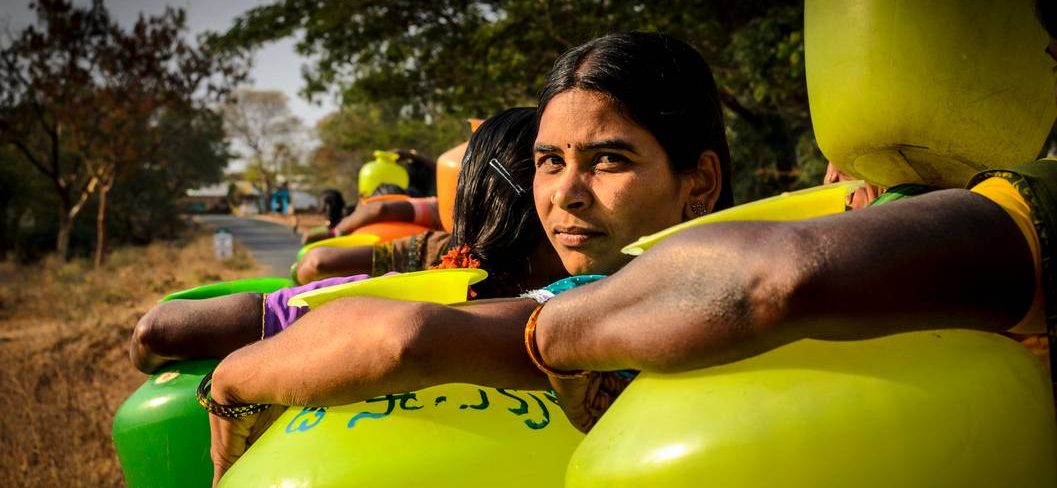
When it takes more than 30 minutes to get to the drinking water source, the access is classified as “limited. Women and girls bear the brunt of this shortcoming. © Carlos Garriga/ We Are Water Foundation
Surface water
This category includes direct water consumption from rivers, reservoirs, lakes, ponds, streams, ditches, irrigation canals, or ponds. 1.56% of households, almost 122 million people (more than 110 million in rural areas and over 11 million in cities), are in this situation.
The essence of the problem indicates the way to the solution
In summary, a quarter of the world’s population, 1874 million, did not have access to safe drinking water at home in 2020, but had access to improved sources nearby. The worst part is borne by those who do not have safe drinking water sources, not even at home, who reach 489 million.
Our water access projects in the world’s most disadvantaged areas focus on these groups. Of the more than 1,812,500 beneficiaries of our projects in 26 countries, some 519,000 did not have a safe or basic source, consuming water from limited, unimproved or surface sources. At the Foundation, we have seen the urgency of meeting the targets of SDG 6 and that all solutions require community participation, a key factor in achieving the sustainability of the facilities.
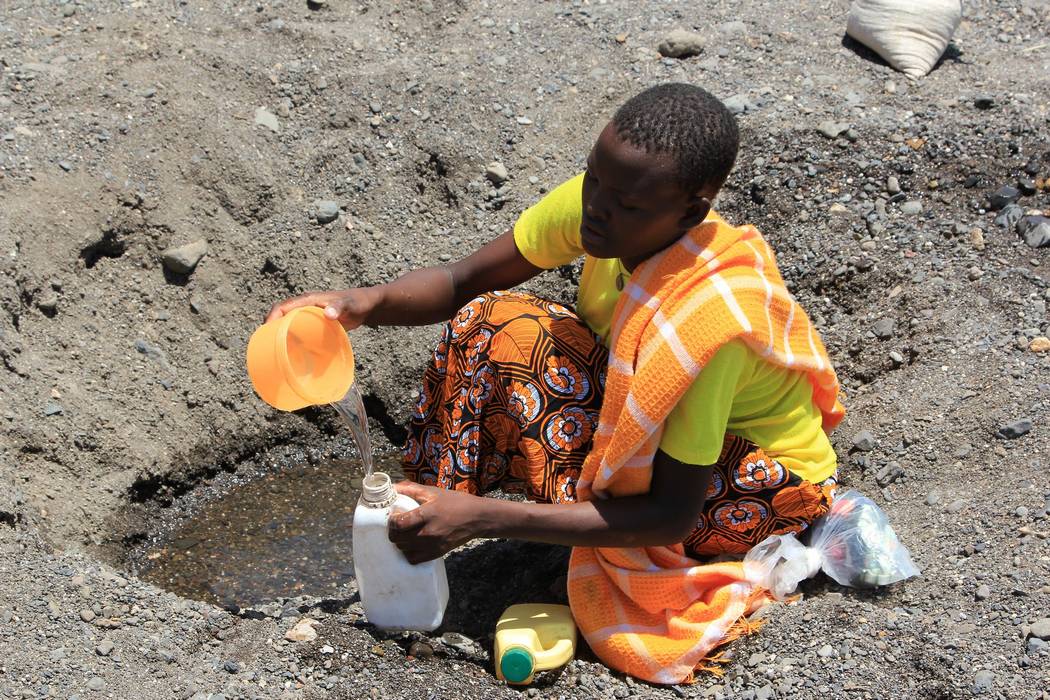
Lack of access to water costs lives, causes indignity, and is a burden that makes any kind of development that leads to the eradication of poverty.© Marisol Grandon/Department for International Development
Lack of access to water costs lives, causes indignity, and is a burden that makes any kind of development that leads to the eradication of poverty, famine, and endemic diseases impossible. We have nine years to achieve the 2030 Agenda. We cannot falter as the Covid-19 pandemic and the effects of the climate crisis show us how vulnerable progress on these essential achievements can be for the realization of all human rights.


